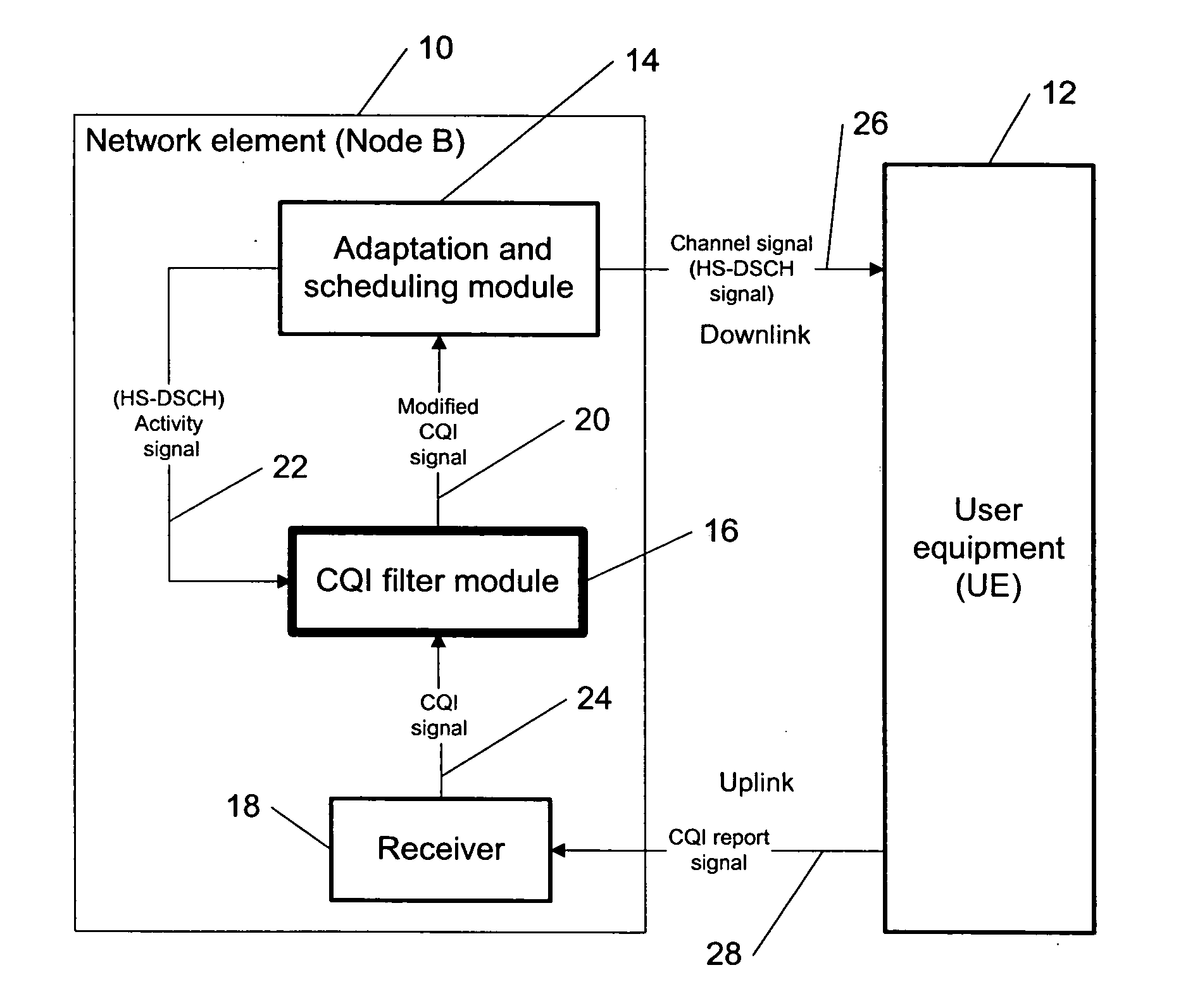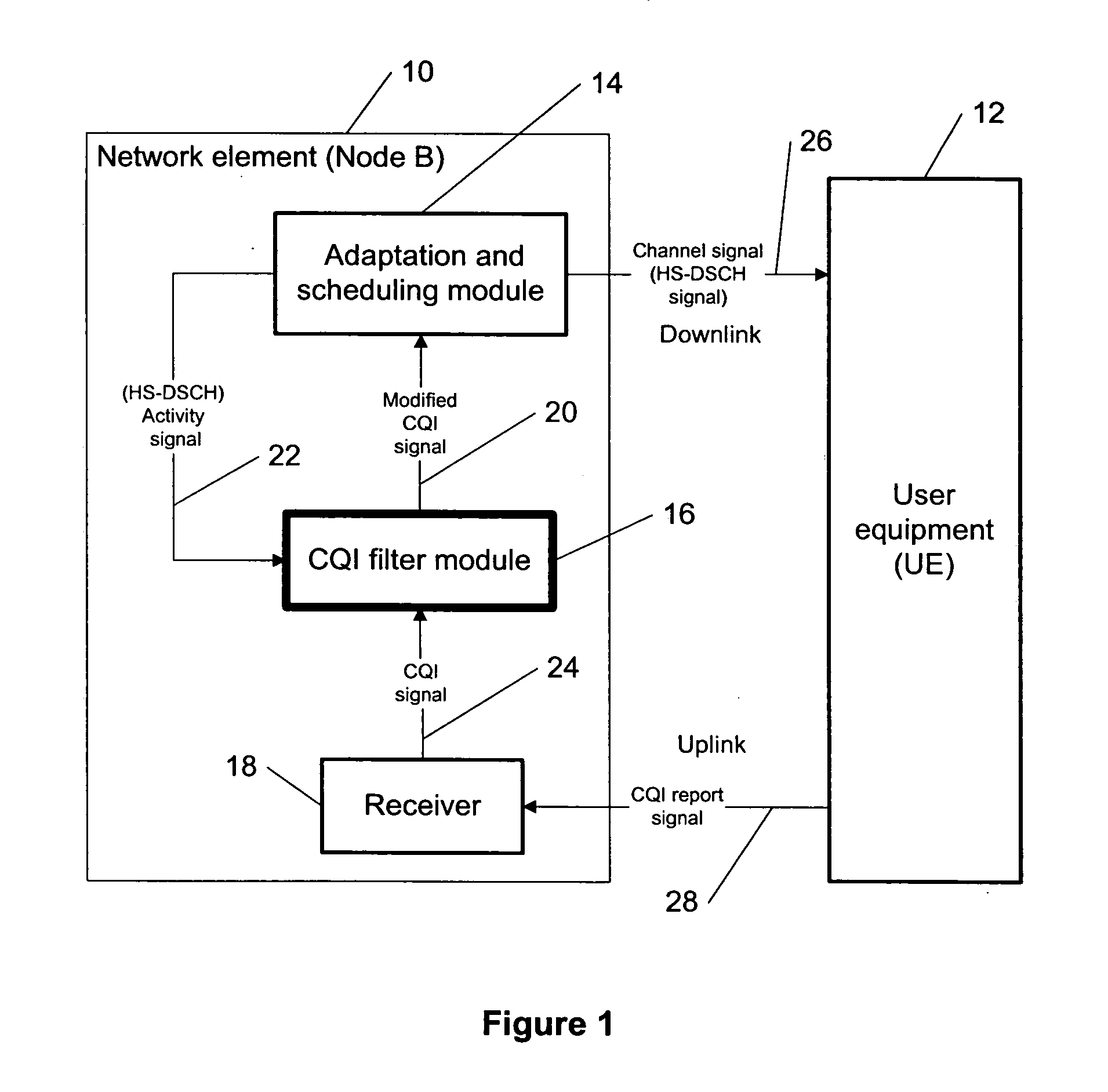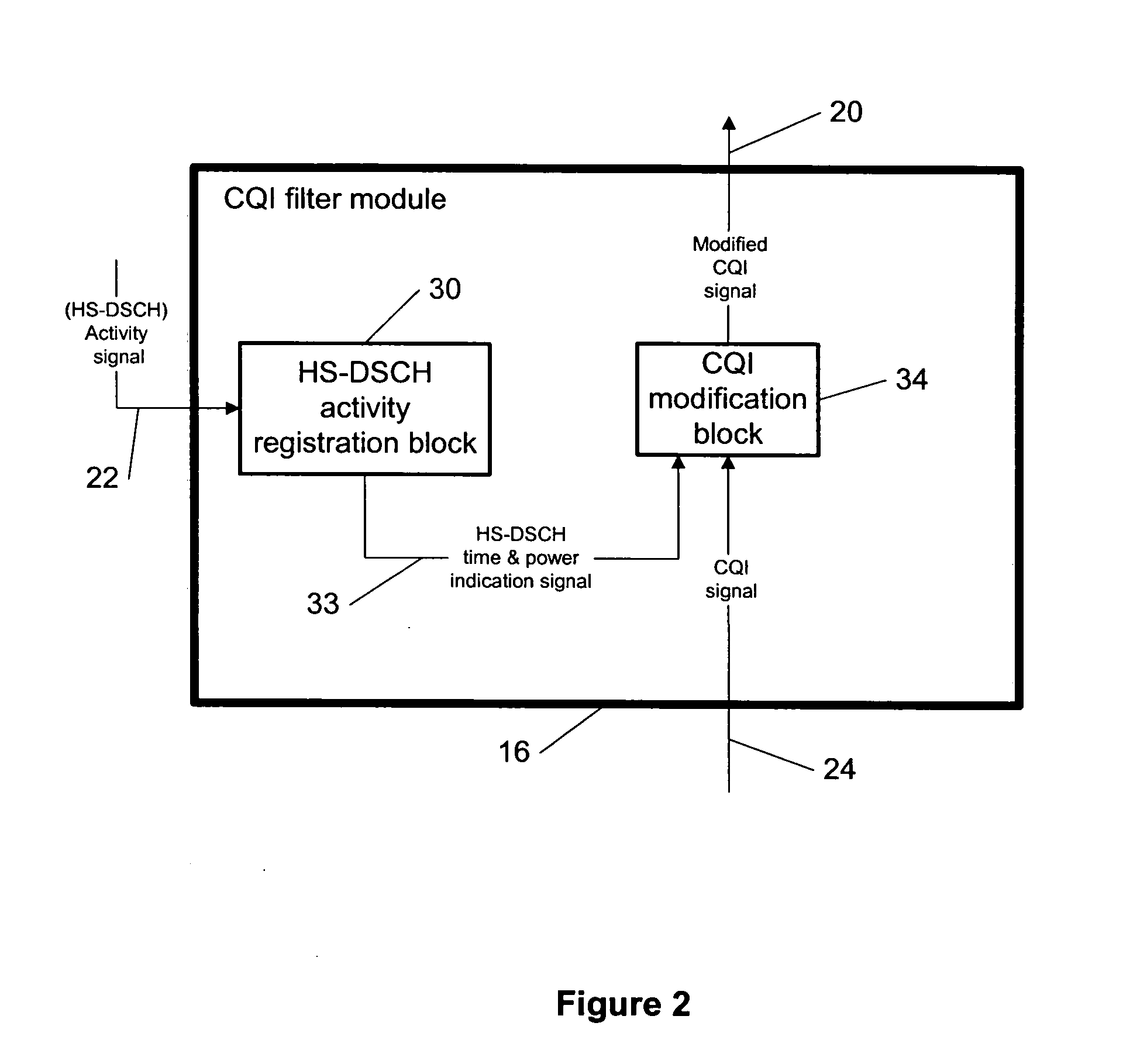Method for improving an HS-DSCH transport format allocation
- Summary
- Abstract
- Description
- Claims
- Application Information
AI Technical Summary
Benefits of technology
Problems solved by technology
Method used
Image
Examples
Embodiment Construction
[0027] The present invention provides a new methodology for improving a high speed downlink shared channel (HS-DSCH) transport format allocation in communication systems (e.g., mobile phone networks) using, e.g., a network element such as a node B.
[0028] As CQI (channel quality indicator) reports made by a UE (user equipment, or alternatively called user terminal) are time stamped in a sense that they correspond to a given reference period, the Node B is able to determine what time instant in the past the given CQI report corresponds to. As the Node B scheduler knows the history of HS-DSCH (high speed downlink shared channel) transmission, it is able to determine how much HS-DSCH power was transmitted during the time corresponding to the received CQI report. Based on this information, it determines the bias required to the CQI reports received at different times to improve an accuracy of the allocated HS-DSCH transport format. Hence, the node B is capable of estimating the impact o...
PUM
 Login to View More
Login to View More Abstract
Description
Claims
Application Information
 Login to View More
Login to View More - R&D
- Intellectual Property
- Life Sciences
- Materials
- Tech Scout
- Unparalleled Data Quality
- Higher Quality Content
- 60% Fewer Hallucinations
Browse by: Latest US Patents, China's latest patents, Technical Efficacy Thesaurus, Application Domain, Technology Topic, Popular Technical Reports.
© 2025 PatSnap. All rights reserved.Legal|Privacy policy|Modern Slavery Act Transparency Statement|Sitemap|About US| Contact US: help@patsnap.com



